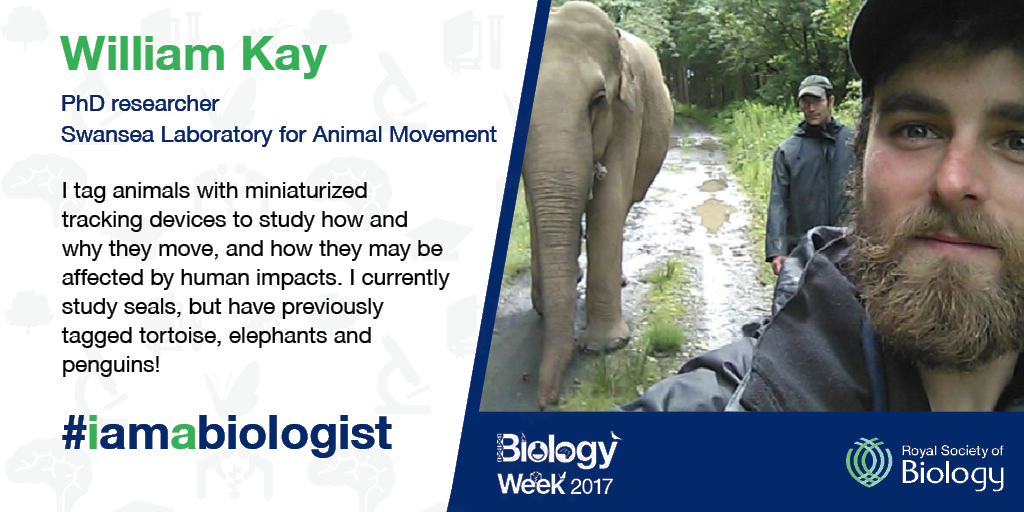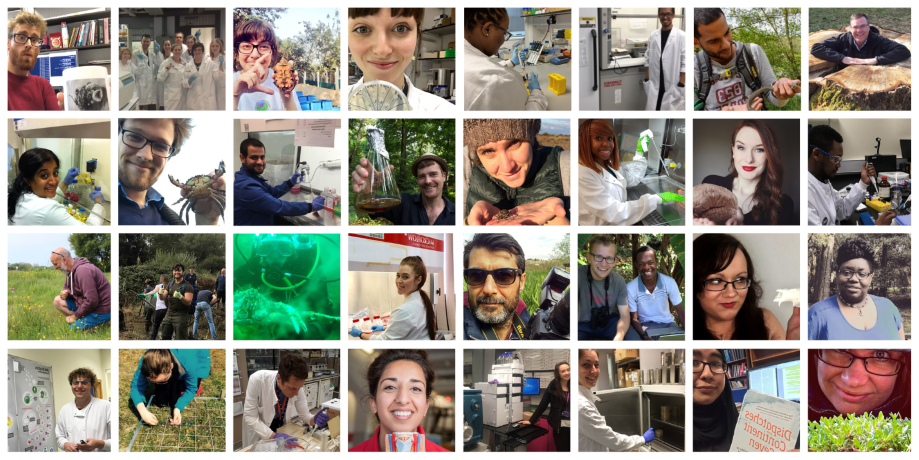#iamabiologist studying the movement ecology of wild grey seals (Halichoerus grypus) using telemetry devices. This forms part of my doctoral work investigating the impacts of marine renewable energy developments on grey seal movement and behaviour in tidal environments.
I was extremely excited to get involved with the #iamabiologist Biology Week Twitter campaign. I think it is fantastic that the Royal Society of Biology are able to facilitate the dissemination of academic research into the public domain, and through such a casual and easily accessible platform like Twitter.

This allows academic research to be seen by the public, and also encourages academics to summarise their research into short and readily understandable ways – a key communication challenge for us all! It is very important that the public can see where and how research funding is spent, and campaigns such as #iamabiologist do this brilliantly – highlighting research as exciting, important and transparent.
Many members of the public caught on to the campaign – some were inspired, whilst others highlighted how vital it was that they were seeing what scientists were up to. The #iamabiologist campaign also brings academics closer together, by creating a unified voice for biological sciences, stimulating ideas and encouraging collaborations.

This is also a good way to give academics who may have not previously been engaged with social media a chance to introduce themselves to the rest of the community, and is a forum for more regular Tweeters to tell us about their latest work. I lost count of the number of #iamabiologist tweets throughout the day and there are still tweets coming in, which just goes to show how well engaged the online community are!
It was remarkable to see the sheer diversity of research and researchers working within biology – from studies on malaria parasites and cognition in bees, to carnivore conservation and cetacean abundance. There were hundreds of pictures shared online: some depicted traditional scenes of fieldwork and lab work, whilst others showed computational and theoretical biology. It was also wonderful to see scientists from all career stages getting involved, from undergraduate students right through to emeritus professors!

So a bit more information about what I do as a biologist: as a bit of background, the UK has a huge marine renewable resource in the form of tidal and wave energy, and this offers an excellent opportunity to develop green energy to reduce the need to burn fossil fuels.
However, any installation which is built to harness such resources may pose risks to the inhabitants of the marine environment. One of the challenges for the marine renewable industry at the moment is to understand the impacts of their developments, and to determine how best devices such as tidal turbines can be installed to generate green electricity, while minimizing any potential detrimental impact.
I am hopeful that the results of my research can go on to inform marine renewable energy industries to help devise strategies for minimising risk, and inform policy makers for decisions regarding marine spatial planning.
Whatever area of biology you are interested in, the #iamabiologist campaign has something for you. Campaigns like this will have great influential power – showcasing biology as an exciting and interesting world will encourage the next generation of wannabe biologists and show others the breadth of the roles bioscientists play in society.
If you want to recap the day, check out the RSB storify on the campaign, and be sure to follow the @RoyalSocBio account if you haven’t already!

